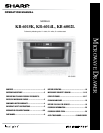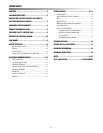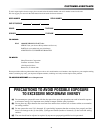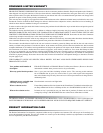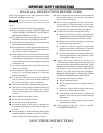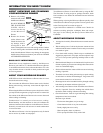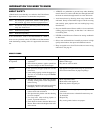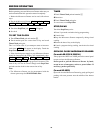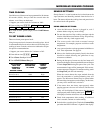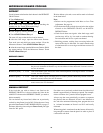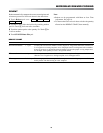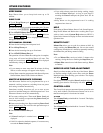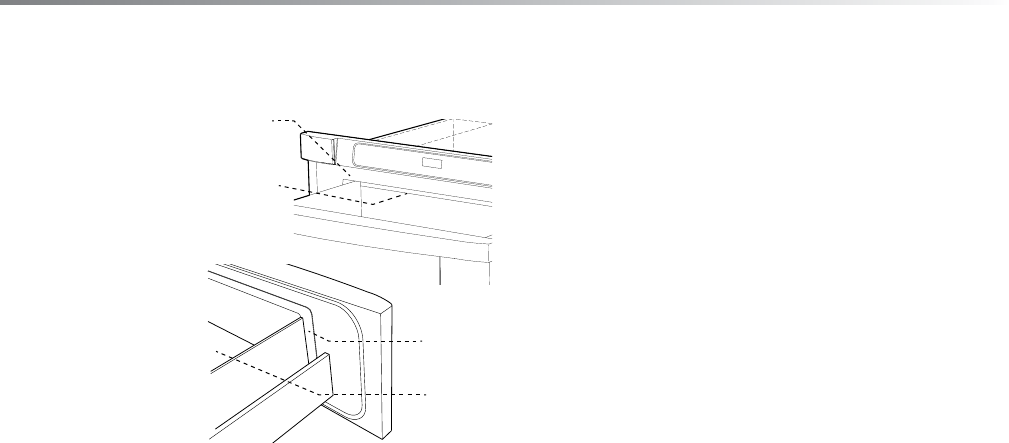
6
ABOUT UNPACKING AND EXAMINING
YOUR MICROWAVE DRAWER
1 Remove all packing
materials from inside
the Microwave Drawer.
DO NOT REMOVE
THE WAVEGUIDE
COVER, which is
located on the top
of the Microwave
Drawer.
2 Remove the feature
sticker, if there is one.
Check the drawer for
any damage, such as
misaligned or bent
drawer, damaged drawer seals and sealing surfaces, broken
or loose drawer guides and dents inside the cavity or on the
front side of the drawer. If there is any damage, do not operate
the Microwave Drawer and contact your dealer or a SHARP
AUTHORIZED SERVICER.
RADIO OR TV INTERFERENCE
Should there be any interference caused by the Microwave
Drawer to your radio or TV, check that the Microwave Drawer
is on a different electrical circuit, relocate the radio or TV as far
away from the drawer as feasible or check position and signal
of receiving antenna.
ABOUT YOUR MICROWAVE DRAWER
ALWAYS have food in the Microwave Drawer when it is on to
absorb the microwave energy.
The vent under the Microwave Drawer must not be blocked.
During microwaving, steam may come from the right side of
the vent.
When using the Microwave Drawer at power levels below 100%,
you may hear the magnetron cycling on and off. It is normal for
the exterior of the Microwave Drawer to be warm to the touch
when cooking or reheating.
Condensation is a normal part of microwave cooking.
Room humidity and the moisture in food will inuence the
amount of moisture that condenses in the Microwave Drawer.
Generally, covered foods will not cause as much condensation
as uncovered ones.
The Microwave Drawer is for food preparation only. It should
not be used to dry clothes or newspapers.
Your Microwave Drawer is rated 1000 watts by using the IEC
Test Procedure. In using recipes or package directions, check
food a minute or two before the minimum time and add time
accordingly.
When opening or closing the Microwave Drawer quickly, food
in the Microwave Drawer may be spilled. To clean, please refer
to the Cleaning and Care section on page 18.
A good microwave cookbook is a valuable asset. Check it for
microwave cooking principles, techniques, hints and recipes.
See page 20 for ordering the Sharp Carousel Microwave
Cookbook.
ABOUT MICROWAVE COOKING
• Arrange food carefully. Place thickest areas towards outside
of dish.
• Watch cooking time. Cook for the shortest amount of time
indicated and add more as needed. Food severely overcooked
can smoke or ignite.
• Cover foods while cooking. Check recipe or cookbook for
suggestions: paper towels, wax paper, microwave plastic wrap
or a lid. Covers prevent spattering and help foods to cook
evenly.
• Shield with small at pieces of aluminum foil any thin areas
of meat or poultry to prevent overcooking before dense, thick
areas are cooked thoroughly.
• Stir foods from outside to center of dish once or twice during
cooking, if possible.
• Turn foods over once during microwaving to speed cooking
of such foods as chicken and hamburgers. Large items like
roasts must be turned over at least once.
• Rearrange foods such as meatballs halfway through cooking
both from top to bottom and from right to left.
• Add standing time. Remove food from Microwave Drawer
and stir, if possible. Cover for standing time which allows
the food to nish cooking without overcooking.
• Check for doneness. Look for signs indicating that cooking
temperatures have been reached.
Doneness signs include:
- Food steams throughout, not just at edge.
- Center bottom of dish is very hot to the touch.
- Poultry thigh joints move easily.
- Meat and poultry show no pinkness.
- Fish is opaque and akes easily with a fork.
Waveguide
Cover
Sealing
Surface
Oven
Cavity
Sealing
Surface
INFORMATION YOU NEED TO KNOW



